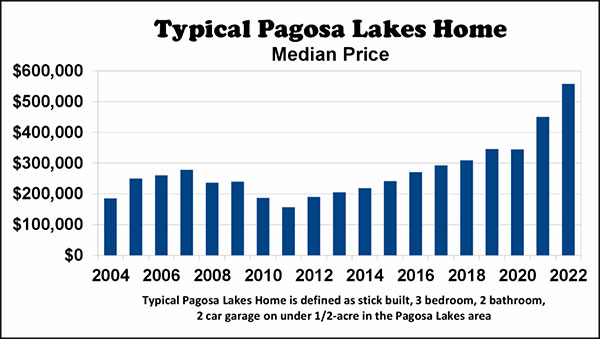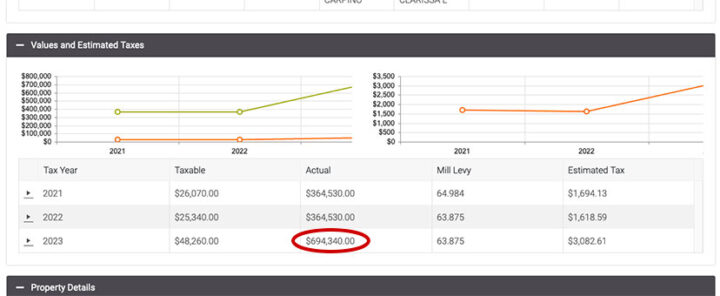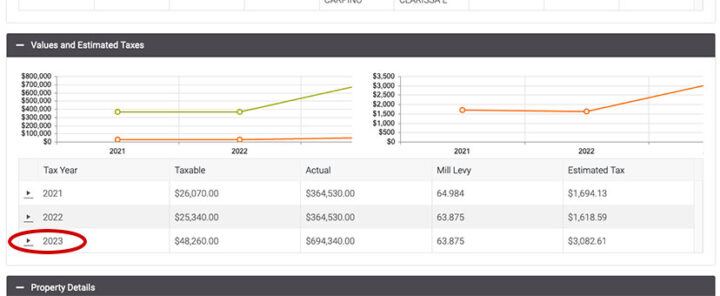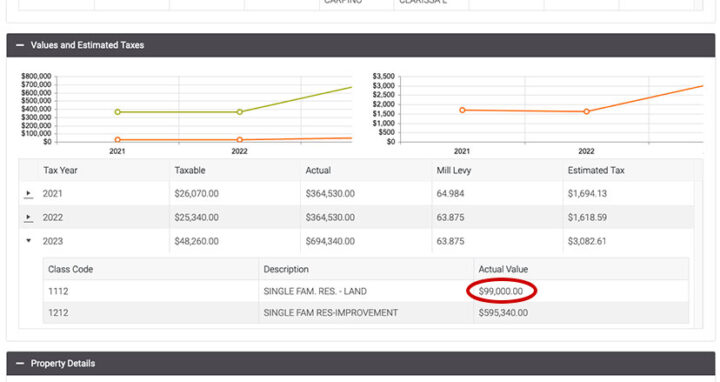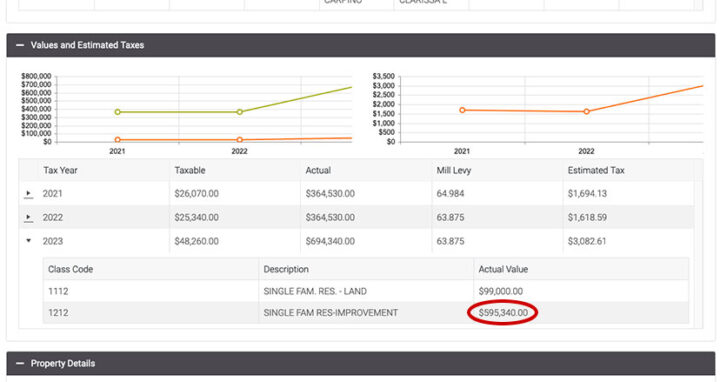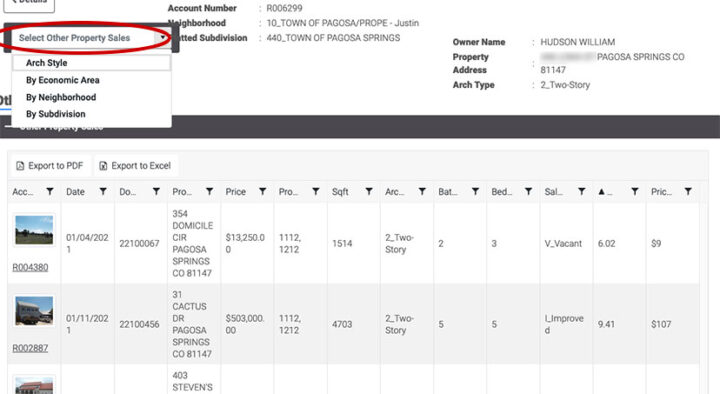Last week, we had a couple of Archuleta County citizens submit their concerns to us here at the Daily Post, addressing the rather striking increase in property valuations in our community.
Those new values will apply to the property taxes you’ll be asked to pay in 2024.
Both writers suggested that certain property owners might want to protest their increased valuations. If you believe the Assessor has valued your property at more than it could have sold for on June 30, 2022, you might wish to protest the valuation.
A protest, being easier said than done, of course. A successful protest will require considerable homework.
Historically, not all property valuation protests have been successful here in Archuleta County. Based on stories I’ve heard, I would suggest that relatively few are successful. The process for setting values is fairly well defined by the Colorado state government, and typically, the County Assessor follows the guidelines closely. But guidelines are just that — guidelines — and mistakes do occasionally happen. A person with enough time on their hands, and with a good case to make, can be successful in challenging a new valuation.
But the deadline for filing a protest is coming up quickly. The filing period runs from May 1 through June 8, 2023.
If the Assessor denies your protest, you can appeal to the County Board of Equalization (CBOE), if you file by July 15.
How might you go about determining whether to protest your valuation? Here are a few suggestions to help you make that decision. (I am going to be discussing a residential property with an existing home. The process will be different for other types of properties.)
The valuation of your property is supposedly based on sales of similar properties — called “comps” or “comparable sales” — between July 1, 2020 and June 30, 2022. On average, the prices paid for real estate in Archuleta County increased significantly during that period. Here’s a chart from local realtor Lee Riley, that we’ve shared in the Daily Post.
We cannot be surprised that our real estate valuations have increased. But in your particular case, the “comps” might have been poorly selected. A mistake might have been made. This is what you might want to research.
If you go to the County Assessor’s web page, here, you can click the link called, “Property Records Search” in the left column.
You should land on this page:
Enter your name, or street address, or other pertinent property information, click “SEARCH”, and you will be sent to the next page.
In my case, I was shown the information about my house downtown:
Above “OWNERNAME”, you will find four buttons.
The “Property Report” button will generate a printable PDF including the same information displayed on this web page, plus a few additional details.
But it might not include all the information you will need to compare sales.
The second button, “Tax Information”, provides old property tax information. Not very useful.
The “GIS Map” button might prove handy.
What you are looking for is current information about your values, and your “comps”.
Thus, the fourth button, “Other Sales”, is very important. More about that, later.
About 2/3 the way down the page, you will find your tax information for the past three years.
In my particular case, my property value has nearly doubled since June 30, 2020, in the Assessor’s opinion. And so, my estimated property tax also doubled.
The total value of my residential property includes Land and Improvements.
$694,340.
When you view your main page, the Land and Improvements are displayed as a single “Actual” value.
You will likely want to know the separate values — Land and Improvements — because you might find that the Land was properly valued, but the Improvements (house, garage, outbuildings, etc) were not. Or vice versa.
There is a little arrow just to the left of the “Year”…
…and when you click it, you can see the separate Land and Improvements valuations.
As we can see below, the Assessor defined my Land value at $99,000, for .86 acres in downtown Pagosa Springs.
The Improvements include a three-bedroom house, built in 1900… plus a detached garage (1950?) that’s been converted into an art studio… and a pole barn with no walls (also 1950?).
The Improvements are valued at $595,340.
How did the Assessor come up with these values? They weren’t simply pulled out of a hat. Supposedly, those values are based on sales of similar properties.
“Comps”.
“Comparable Sales”.
How well did the Assessor hit the target?
The key to your further research is the “Other Sales”, at the top of your main page.
When you click this button, the Assessor shows you some properties, sold between July 1, 2020 and June 30, 2022, that the Assessor thinks were similar to your property.
In theory, the Assessor’s staff could come visit your property, and make an appraisal of its values based on their expert opinion. But this method is impractical, considering the number of properties (30,000?) that would have to be visited.
So the Assessor uses “comps” and a mass appraisal process.
Here is the first page of the sales related to my own property valuation, when I first open the page:
This first page contains links to 45 sales in Archuleta County. Not all of the sales were homes. Some of the sales shown are vacant property. But we recall that “Land” is valued separately from “Improvements”… so that might explain why the Assessor is including vacant land in related sales?
In my case, the properties shown on this first page are all listed as “2_Two-Story”. That’s the “Architectural Style”. Not a terribly descriptive designation, however. It’s actually not an architectural style, per se. It’s more like a ‘building size’. My house is supposedly related to homes that are “two story” structures.
But the valuation of a home is ideally based on other factors beside how tall the building might be. The number of bedrooms and bathrooms, for example. The age of the house. Its condition. The neighborhood. Does it have water and sewer service? Electricity?
At the top of this page, you can see that my house is in Neighborhood “10”. And I can find the sales in that particular neighborhood…
…if I click the button that says “Select Other Properties”…
…I get a drop-down menu, and I can choose “By Neighborhood”… or “By Economic Area”… or “By Subdivision”…
When I choose “By Neighborhood” I find, not 45 sales, but only 26 sales. And only 6 of the 26 sales are “2_Two-Story” homes…
…and only three of those 6 are three-bedroom homes, like mine. The other three are four-bedroom homes.
The three-bedroom homes, like mine, in my “Neighborhood”, sold for prices ranging from from $379,500 to $615,000.
But my property is being valued at $694,340. Is that possibly a mistake?


